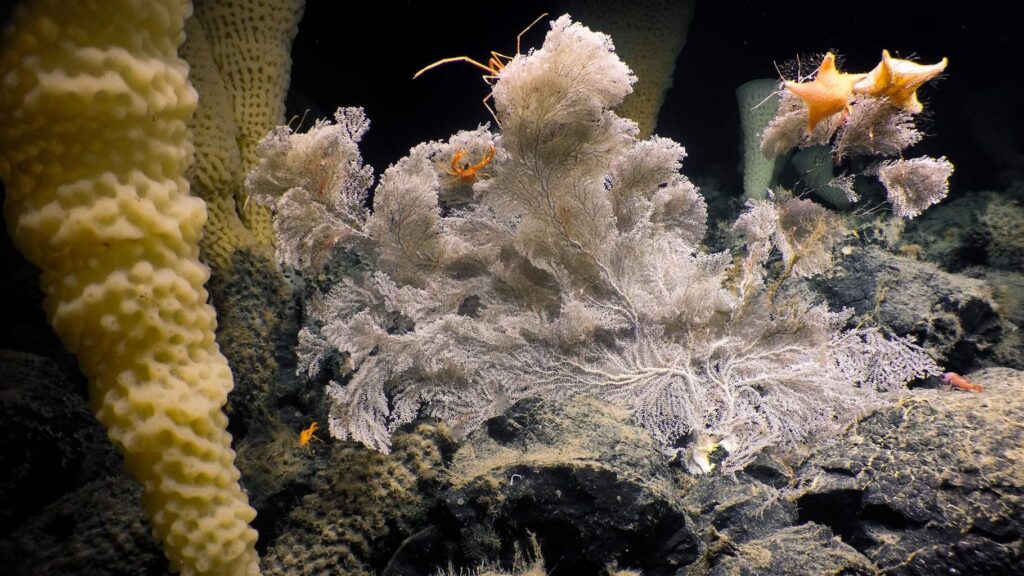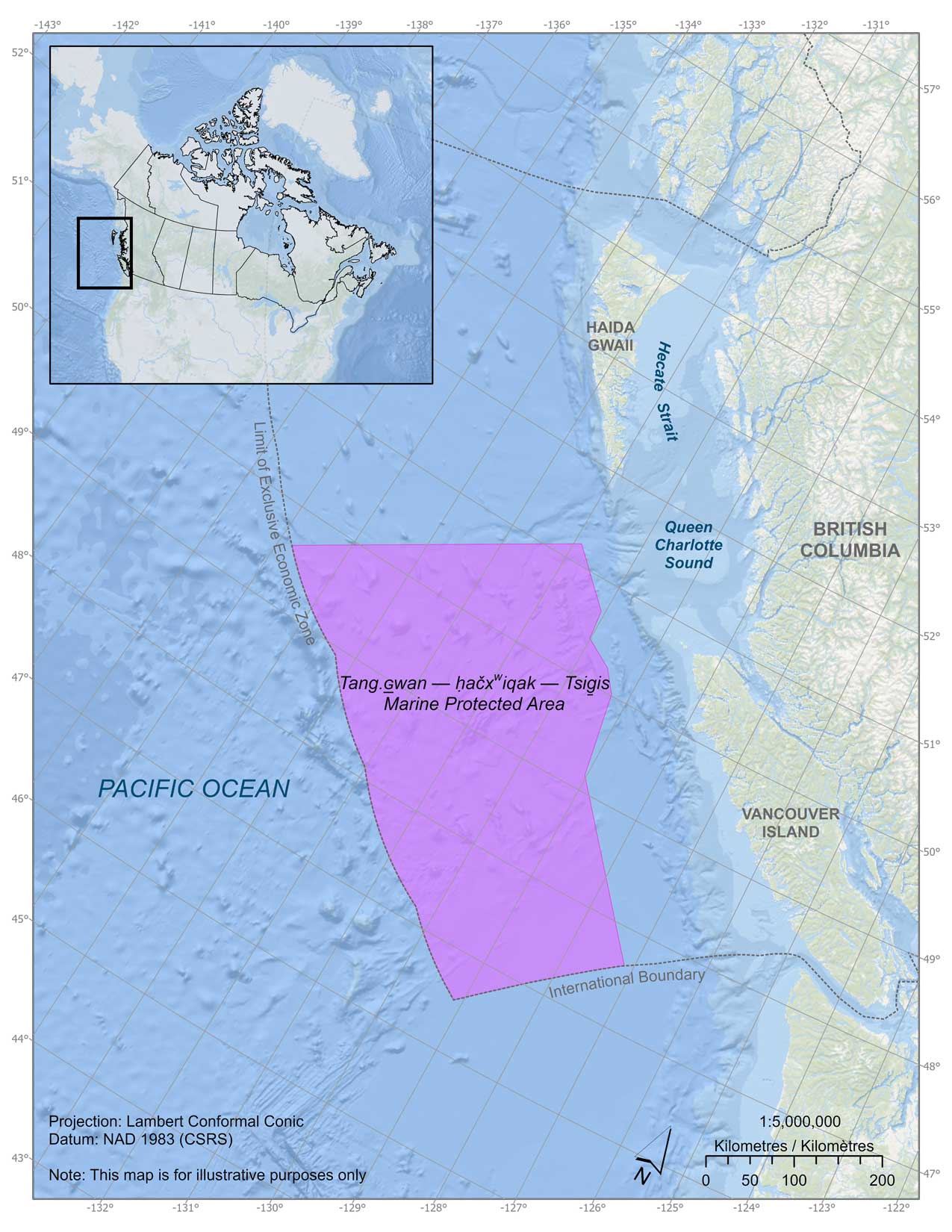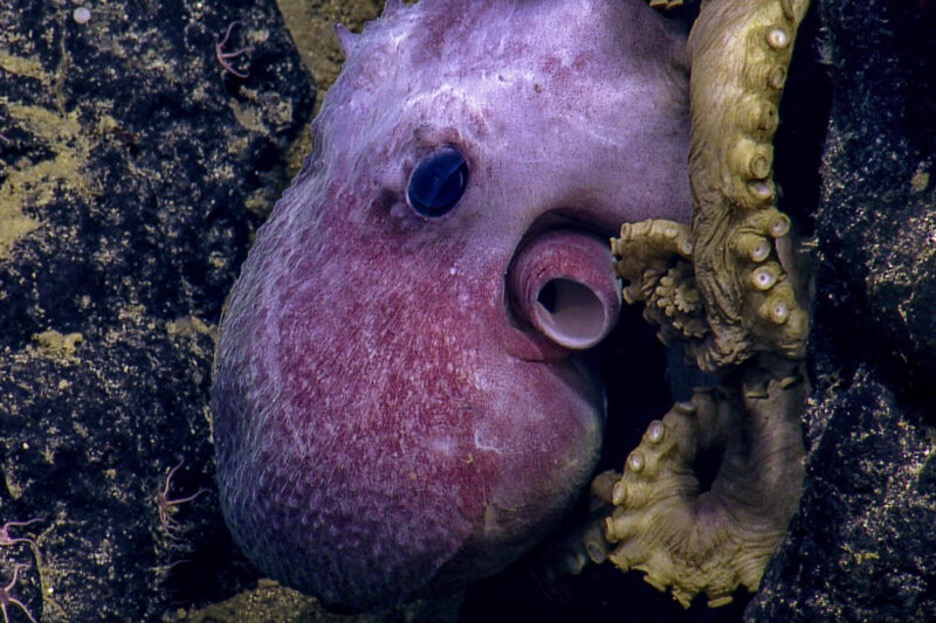
On June 19, 2024, Canada reached a significant milestone with the designation of its largest Marine Protected Area (MPA), Tang.ɢ̱wan – ḥačxʷiqak – Tsig̱is (TḥT) MPA. Located approximately 150 kilometers off the west coast of Vancouver Island in British Columbia, this new MPA covers 133,017 km², representing around 2.3% of Canada’s ocean territory. The establishment of TḥT MPA, under Canada’s Oceans Act, is the result of a collaborative partnership between the Federal Government, the Council of the Haida Nation, Nuu-chah-nulth Tribal Council, Pacheedaht First Nation, and Quatsino First Nation.
What does Tang.ɢ̱wan – ḥačxʷiqak – Tsig̱is mean?

The names reflect the profound connection Indigenous communities have with the ocean and TḥT MPA marks an important step forward for Indigenous governance in Canada.
Ecological Importance of TḥT MPA
TḥT MPA was established to protect the region’s unique geology of superheated hydrothermal vents and ancient underwater mountains (seamounts), both of which are identified as Ecologically and Biologically Significant Areas by Fisheries and Oceans Canada (DFO). Often referred to as a ‘Deepsea Oasis’, this region of the Pacific Ocean is teeming with over 500 documented unique animal species and deep sea marine life who have adapted not only to the lack of sunlight but also to the intense water pressure at those depths. Providing habitat, shelter, food, and nurseries, this region hosts many underwater life forms from phytoplankton and tubeworms to seabirds, sharks, and whales. TḥT MPA also protects all known Canadian hydrothermal vent fields, which are essentially deep-sea hot springs that are home to species found nowhere else on earth.
According to TḥT MPA regulations,
It is prohibited to carry out any activity in the Marine Protected Area that disturbs, damages, destroys, or removes from the Marine Protected Area any living marine organism or any part of its habitat or that is likely to do so.
 Despite these stringent regulations, there are exceptions that permit both recreational and commercial fishing up to 100 metres deep in these biological hotspots. This discrepancy is concerning as it contradicts the primary goal of maximum protection for the region’s diverse endemic species. Effective oversight and management are essential to ensure that the highest level of protection is maintained within the TḥT MPA which must include rigorous monitoring of fishing activities and implementation of adaptive management strategies that can respond to new threats as they arise. Striving for maximum protection is of paramount importance due to the delicate nature of this ecosystem, and only through proactive approaches can we safeguard the invaluable ecological integrity of these biological hotspots.
Despite these stringent regulations, there are exceptions that permit both recreational and commercial fishing up to 100 metres deep in these biological hotspots. This discrepancy is concerning as it contradicts the primary goal of maximum protection for the region’s diverse endemic species. Effective oversight and management are essential to ensure that the highest level of protection is maintained within the TḥT MPA which must include rigorous monitoring of fishing activities and implementation of adaptive management strategies that can respond to new threats as they arise. Striving for maximum protection is of paramount importance due to the delicate nature of this ecosystem, and only through proactive approaches can we safeguard the invaluable ecological integrity of these biological hotspots.
Benefits of large Marine Protected Areas
Canada has committed to conserving 30% of its marine and coastal waters by 2030 (30×30) but to date, it has protected around only 15.54%– just half of its goal. This gap underscores the importance of GSA’s new Marine Planning program, which aims to reduce biodiversity loss, mitigate impacts of climate change, and ensure that coastal communities are thriving in BC, through supporting key tools such as MPAs and Indigenous Protected and Conserved Areas, both of which contribute to Canada’s national commitment of 30×30. GSA is currently working alongside Cowichan Tribes where we will be offering support to the youth in the community to achieve their vision for management and protection of their marine territory. The result of this collaboration will be a youth Marine Forum that will be held in late fall this year.
What constitutes a “large” MPA? A marine protected area that is typically over 100,000 square kilometers, although various organizations and scientific bodies will differ in this number.
- Increase biodiversity and resilience: by capturing multiple habitat types or physical features, large MPAs support many different communities of species and potentially entire ecosystems.
- Benefit migratory species: larger protected areas offer substantial advantages for species that migrate across vast distances such as sharks, whales, and birds and also offer refuge for fish populations to grow far away from fishing threats.
- Resist disturbances: large MPAs are better equipped to withstand large-scale anthropogenic impacts such as climate change and can act as a buffer against ocean acidification.
- Cost-effective: implementing and managing large MPAs are often more cost-effective compared to smaller MPAs in terms of both establishment and managing costs.
Paving the path forward
Management of Tang.ɢ̱wan – ḥačxʷiqak – Tsig̱is Marine Protected Area will continue to be a co-managed effort between Nuu-chah-nulth Tribal Council, the Council of the Haida Nation, Pacheedaht First Nation, Quatsino First Nation, and DFO. The designation of TḥT MPA is certainly a promising step towards achieving Canada’s national biodiversity and marine protection targets, but there is still a lot of work ahead.
The deep sea often remains an overlooked part of the ocean due to its remote and mysterious nature, making it especially more vulnerable to exploitation. To better protect Canada’s deep-sea environments, we must deepen our understanding of these areas and their unique inhabitants. Currently, only about 8% of the ocean is covered by MPAs worldwide, despite the increase in their number and spatial extent over the last decade. GSA will continue to advocate for strong marine protection policies and support Indigenous-led conservation efforts in the Salish Sea, as we work towards advancing marine conservation efforts in BC as well as 30×30.
Even powerful and robust commitments like BC’s new Coastal Marine Strategy, while certainly a major step in the right direction, still has room for improvement as there is currently no legal framework in place to hold the government accountable for the actions that are mentioned. This highlights the need for continued vigilance and advocacy to ensure that these commitments translate into tangible outcomes.
Together we can drive forward the necessary measures needed to safeguard the marine environments in BC for generations to come. Join us in celebrating this milestone achievement and we hope you will share this news with your network!

Image (top): Canada’s largest underwater volcano, Explorer Seamount, is home to newly-discovered, deep-sea glass sponge, Pinulasma, colonies known as “Spongetopia.” Ocean Exploration Trust/Northeast Pacific Seamounts Expedition Partners
Image 3: Map of Tang.ɢ̱wan – ḥačxʷiqak – Tsig̱is Marine Protected Area (TḥT MPA). Fisheries and Oceans Canada (DFO)
Image (bottom): A deep-sea octopus, Graneledone boreopacifica, off the west coast of Vancouver Island. Dr Cherisse Du Preez Ocean Exploration Trust/Northeast Pacific Seamount Expedition Partners
